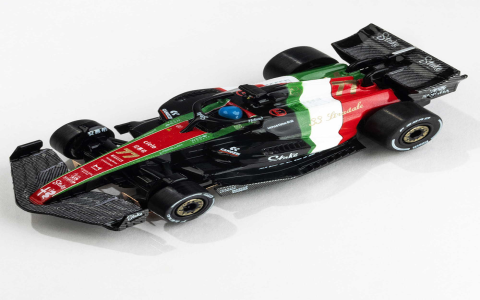Understanding F1 Slot Cars
Formula 1 (F1) slot cars are miniature, electrically powered replicas of real-world Grand Prix racing cars, designed to be raced on specialized tracks featuring guiding slots. They provide a dynamic and engaging way to experience the thrill of F1 racing in a scaled-down format, appealing to both collectors and racing enthusiasts.
Key Characteristics and Features
F1 slot cars possess several distinct characteristics that define their appeal and performance:
- Scale and Detail: The most common scale is 1:32, offering a balance of authentic detail and suitability for home tracks. Other scales include 1:24 (larger, more detailed), 1:43, and HO (smaller, for compact layouts). Manufacturers focus on accurately replicating F1 car liveries, aerodynamic elements, and driver figures.
- Chassis and Motor Configuration: Designs vary, but typically feature an inline, sidewinder, or anglewinder motor configuration. The choice of motor, gearing, and tire compound significantly impacts performance. High-performance models may include adjustable chassis components.
- Guide System: A guide flag or blade located at the front of the car fits into the track’s slot, providing electrical pickup and steering. The depth and type of guide can be crucial for smooth operation.
- Magnetic Downforce: Many F1 slot cars incorporate magnets (traction magnets) located in the chassis to increase downforce, allowing for higher cornering speeds. The strength and position of these magnets can often be adjusted or removed for a more challenging driving experience.
- Digital vs. Analog Control:
- Analog Systems: Traditional setup where each lane has one car, and speed is controlled by varying voltage via a hand controller. Simple and robust.
- Digital Systems: Allow multiple cars (often 6 or more) to race on the same two lanes, with capabilities for lane changing, overtaking, and sometimes simulated fuel and pit stops. This offers more realistic and strategic racing.
Performance and Realism
While not perfectly simulating full-scale F1 physics, F1 slot cars aim to capture the essence of high-speed racing. Emphasis is placed on:

- Acceleration and Top Speed: Governed by motor power and gearing.
- Handling and Grip: Influenced by tire compound, car weight, weight distribution, and magnetic downforce.
- Driver Skill: Successful racing requires smooth throttle control, understanding braking points, and choosing optimal racing lines, especially with reduced or no magnetic assistance.
Collectibility and Community
F1 slot cars are highly collectible, with models representing different teams, drivers, and eras often appreciating in value. A vibrant community exists around F1 slot car racing, with clubs, organized events, and online forums dedicated to tuning, customizing, and competing.



